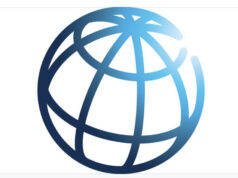By Assegid Habtewold
Ethiopian Science and Academic Network and One Pupil organized a conference at Ethiopian Embassy in Washington DC on May 18th 2019. Congratulations to the team for organizing such a successful event. We need these kinds of platforms to deliberate and strategize on how to improve our education system, one of the key factors to transform our country. The theme of my 15 minutes presentation was “The Place of Leadership Development to Implement the Ethiopian Education Roadmap.” This article captures the main essence of the presentation.
From the start, I disclaimed that I’m not here as an expert on education, but rather, as a leadership practitioner who began taking lead as a youth leaderin the early 90’s. As the president of AAU students’ union, in the late 90’s, I had also some golden opportunities to witness the place of leadership from a very close distance- from the classroom to the ministerial level.
I was lucky to serve together with some great student leaders, and work with faculty and department heads. Unfortunately, I also observed some failed leadership while I was traveling to the different faculties of AAU, a few universities out side of Addis, and some government offices. In short, I hadenough exposures to attest the vital place of leadership for our education system.
I was also there presenting as a leadership professional. I wrote books, articles, and blogs on the theme leadership. I’ve been coaching and trainingleaders of some government agencies, major corporations, and community organizations here in the US. During my recent travel to Ethiopia, last November, I had chances to conduct some consultative discussions, make keynotes, and facilitate workshops for some corporations and learning institutions. I am grateful for the opportunities I was given. These experiences allowed me to closely witness the eagerness of the leadershipof these institutions to bring leadership experts like myself to empower their people. I also saw the hunger and thirst for knowledge from participants. That is to say, I was there presenting as a leadership professional to share my thoughts on how leadership development is critical to implement the Roadmap successfully.
Before jumping to talk about the vital role leadership plays for the implementation of the Roadmap, I gave a context. Reminding the audience that Ethiopia is experiencing change, I pointed out that in the past peopleused to say ‘change or risk stagnation’. But, in the 21st C, it’s ‘change or die’. You might have already noticed, many individuals, organizations, and communities ‘died’ because they had resisted change. Like the dinosaurs, many ‘died’ because they failed to be friend with change. They were unableto make deep change on time. Otherwise, all victims of change tried to catch up with it but it was too late. They were stubborn to undergo deep change when it mattered the most, and paid dire prices.
Ethiopia now is in a critical juncture aspiring to undergo a transformational change. This is encouraging. Hope is on the horizon. However, we should understand that change means one thing to some and another all together to others. It is subjective. What is more? Change has also levels: Superficial and Deep.
For example, if my current shoe is hurting me, I just need to buy a new one. I don’t need to go through lots of structural and deep changes. However, if I had an accident and if I broke my leg, I need a deep change that may include amputating my leg and having a substitute. Another example. If a company is experiencing revenue decline, it may need to make some quick changes to reverse gear and begin increasing its income. Nonetheless, if a company is losing its customers in mass and its market share going down spiral, it has to go deep change before it goes bankrupt. This kind of change, nevertheless, demands changing at so many levels including the top leadership, the policies, brand, and the underlining culture of the organization.
Depending on where we are, we can choose either level of change. Both are relevant in their rightful place. But, we have to stop and make that call wisely. Sustainable development at national level calls for a deeper change.
In my personal opinion, the kind of change that Ethiopia needs at this juncture is deep change, not superficial. If we are on the same page on this, for a given deep change to succeed, the least, these must be carried out:
1. Reforming the culture
2. Putting in place the necessary laws
3. Building/rebuilding institutions
4. Remodeling the education system
5. Developing the people
Though each of these is important, in my presentation, I only highlighted the last two points. In my future writings, I may cover the remaining top three. For now, as you may already now, Ethiopia decided to reform itseducation system. That is why we have now a new Roadmap. This is outstanding.
As I disclaimed earlier, I wasn’t there as an expert on education that I didn’t talk about the actual Roadmap and its content. My focus was about the need to raise competent leaders who could implement the Roadmap so that its intentions are translated into concrete results. And, in turn, Ethiopia, through her new education Roadmap may equip the next generation leaders who enable her experience true transformation in one generation.
Change isn’t a one-time phenomenon. It’s a process. Sometimes, it takes years, even decades. Though change is fluid and don’t take a straight-line, for the sake of understanding, let’s break down change into three phases: Initiating, Implementing, and Sustaining. Note that there are many major and mini-steps within each core stage. A given organization or nation may also pass through multiple stages at the same time. The activities that should be carried out under each stage also vary from a given change case to another.
The Roadmap is now in the Initiation phase. There may be some implementations underway though. At this point, it is very critical to think about developing leaders at all levels to implement the Roadmap so that it may achieve its goal and objectives. As the saying goes: ‘leadership makes or breaks’. Look at any nation or organization, even a family. If you see that nation or organization or family flourishing and advancing, no doubt, though there may be other factors, the single most important factor is leadership.
We may not agree about its definition and may remain arguing about what kind of leadership is necessary for a given organization or nation. Interestingly, like beauty, we all know leadership when we see it. When we walk into a place or organization or village, we will immediately sense the presence or absence of leadership. That is why the phrase ‘leadership makes or breaks’ resonates to many around the world.
You can have everything you need for a change and still may not succeed. If there is lack of proper leadership from the top to bottom, the change will fail. For the Roadmap to get implemented successfully, we need competent leaders. However, we cannot have such leaders without investing our time, energy, and resources. We need to plan and strategize to develop leaders. In short, for the Roadmap to bring meaningful change and finally produce productive citizens who are part of the solution to transform Ethiopia, we need to develop the organizational and leadership capacity of leaders from the top to the grassroots- classroom level.
Every new effort starts with idea, then you write it down, and finally you implement it. Afterward, you evaluate to see if it worked and attained the intended results. If it succeeded, great, if not, you regroup and start the process all over again. At each level of this flow, we need leadership with unique qualifications.
When the Roadmap was released, it passed the ideation phase. After documenting the new ideas that aimed at improving the education system, next is gathering inputs to improve it, and ultimately implement it. The latter is the toughest. That is why, going forward, it is key to develop competent leaders at all levels to implement the Roadmap successfully.
We need leaders at all levels. The top leadership- at the Ministry level is the highest leadership that should focus on vision casting, and providing clear directions, and this Roadmap is one of the deliverables of the top leadership and those professionals who consulted and advised the leadership. The vision also needs effective strategies. The top leadership in close consultation mainly with leaders at university and college levels, I presume, have already come up with or may still be working on it to enlist potentialstrategies and tactics to implement the Roadmap. At the end of the day, leaders of faculties and departments, their admin staff, and teachers/faculty members are the ones who play critical leadership roles for the successful implementation of the strategies and tactics on the ground to translate the vision into realities. The vision may abort if there is a lack of competent leadership at this level of the hierarchy. Leadership is especially critical at this level in the hierarchy due to the fact that leaders/teachers not only they should equip their respective students technically, but also they are expected to demonstrate leadership in empowering their students by molding their attitudes, mindsets, people skills, and character. They cannotdo that theoretically. They should lead by example. If they themselves aren’t well developed as leaders, they cannot fulfill this obligation. Remember, students may not pay attention to what their leaders/teachers are saying but rather what they do. There is a saying, “Your actions are so loud that I cannot hear you.”
Of course, at the end of the day, we need new breed technocrats in all fields of studies who are not just technically superb but also well equipped as problem solvers, proactive, innovative, and creative geniuses with ‘I can overcome and succeed’ mindset. These are important qualities of leadership. They should also develop character and demonstrate consistency, authenticity, and credibility to serve the public with integrity. These vital leadership attributes should be developed while students are stillin school before they go out to serve. Parents and local community leaders, and other stakeholders at the grassroots level should also be empowered to play their respective roles for the successful implementation of the Roadmap.
Developing leaders should be done by following two routes: Short courses to achieve urgent and quick results, and long term programs for lasting solutions. Since implementing and harvesting the results of the new Roadmap takes years, if not decades, the relevant body at ministerial level should prepare for the long term development of leaders at all levels while partnering with other stakeholders to provide quick leadership development courses so that all stakeholders are ready to shoulder their respective leadership responsibilities to implement the Roadmap. The long term effort may require establishing a leadership organ (institute) or partnering with the existing leadership schools at various universities to custom design and provide some leadership programs according to the level of leadership of each stakeholder.
Whether in short or long term, the leadership development efforts should consider developing holistic leaders. The programs should incorporate contents that can produce all rounded leaders who have a) The right mindset and attitude, b) The necessary technical knowhow and soft skills[people skills], and c) Character. Providing mere leadership programs that only focus on developing skills doesn’t lead to raising competent leaders. It is like pouring a new win into an old wineskin. We cannot raise new breed leaders who can implement the Roadmap and at the end of the day change the destiny of our country while providing the usual leadership trainingswithout addressing outdated and counter productive mindset and flawed character.
That being said, how can PRO Leadership, a non-profit organization established in 2009 in the US, help in raising competent leaders who can successfully implement the Roadmap? Together with its strategic partners, the following are where it can help:
The good news is that PRO Leadership is going to launch an Initiative called ‘Bridging the Leadership Gaps to Tackle the Major Challenges Africa Faces’ on May 29th here in the US and July 17th in Addis Ababa. The initiative outlined on how PRO Leadership teams up with its strategic partners to empower youth and women leaders in Africa, starting from Ethiopia, by engaging the diaspora. During these upcoming two launching events, we will gather the inputs, advice, and suggestions of potential strategic partners.
If you’re in the DC metro area, please join us on May 29th 2019 @ 5pm at Veterans Plaza downtown Silver Spring, MD and let’s hear your opinion and how you may want to get involved. If you are in Ethiopia, mark your calendar and we look forward to hearing your inputs as well. In the meantime, PRO Leadership has already began discussing with some strategic partners here in the US and Ethiopia to begin implementing the Initiative one community at a time, and you and your organization may join us implement this initiative within your own community.

























